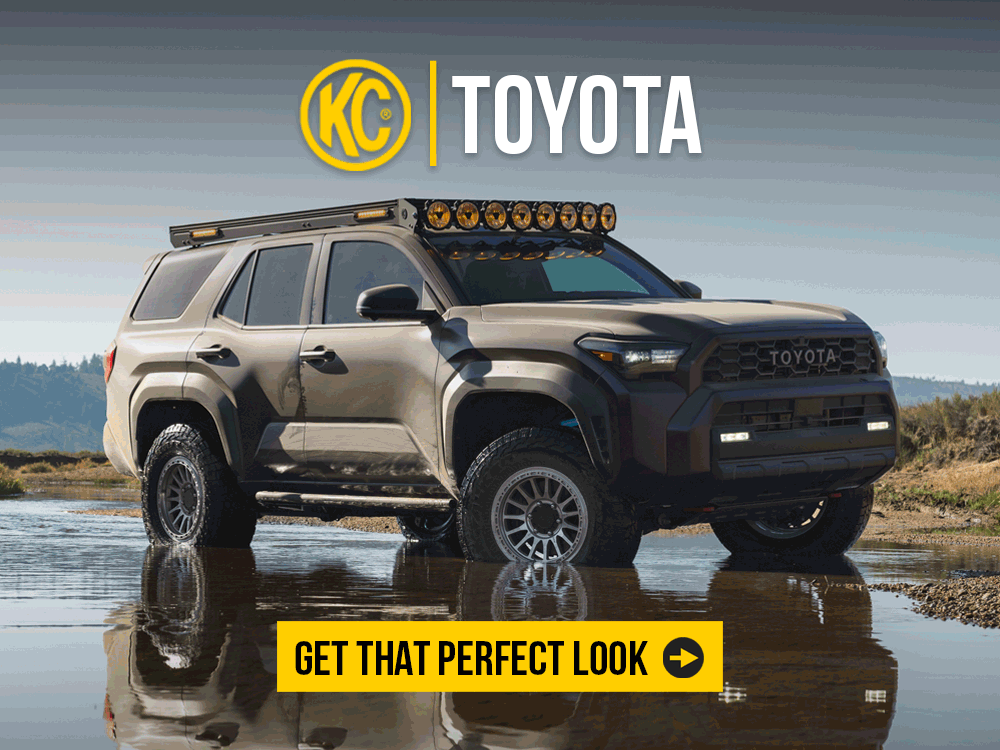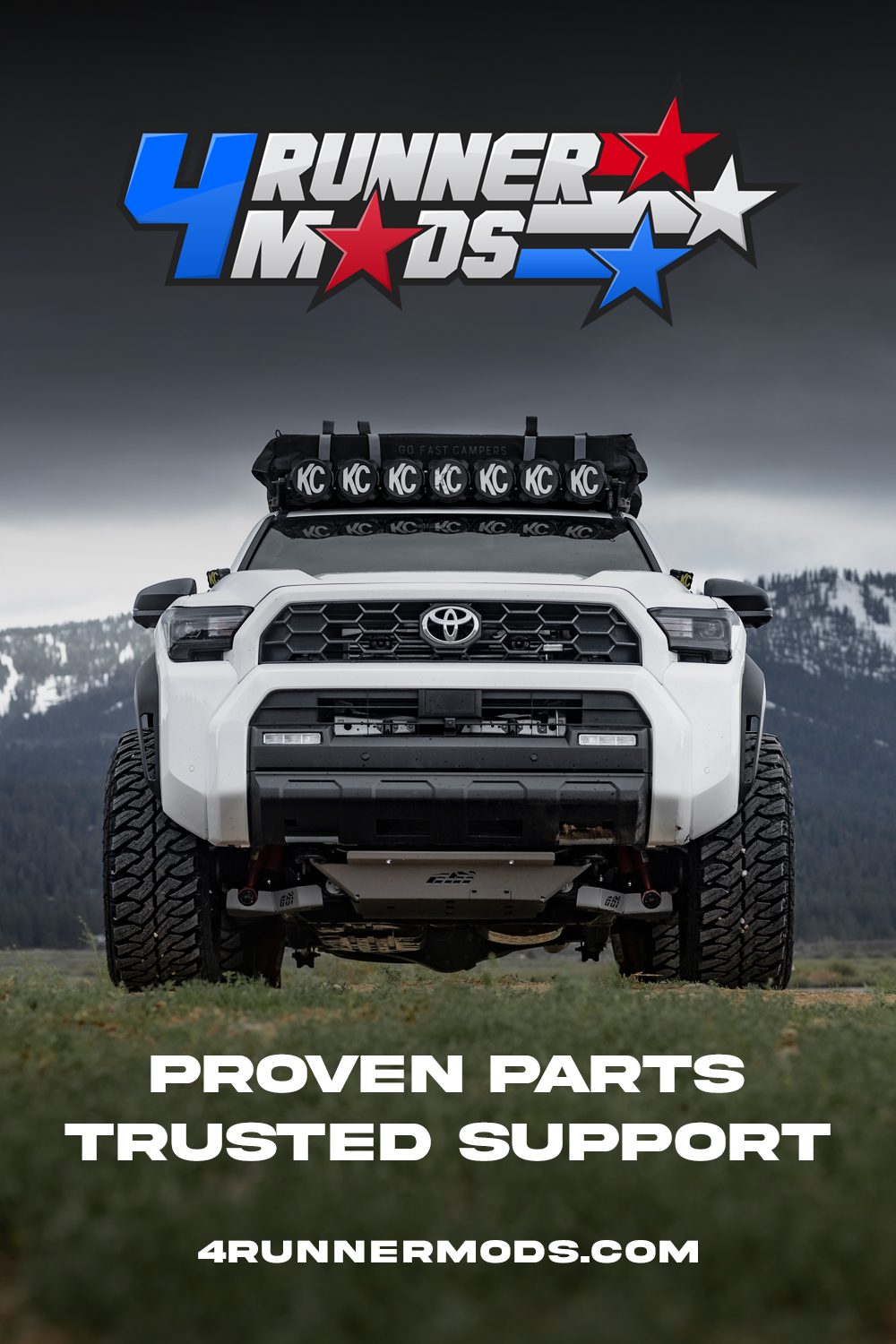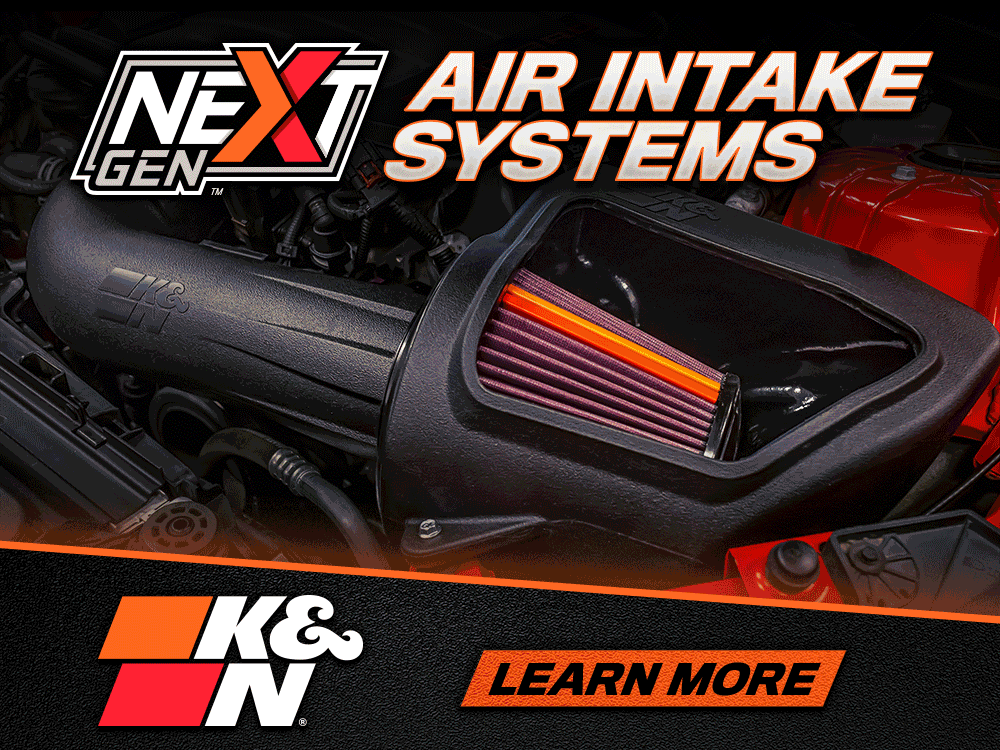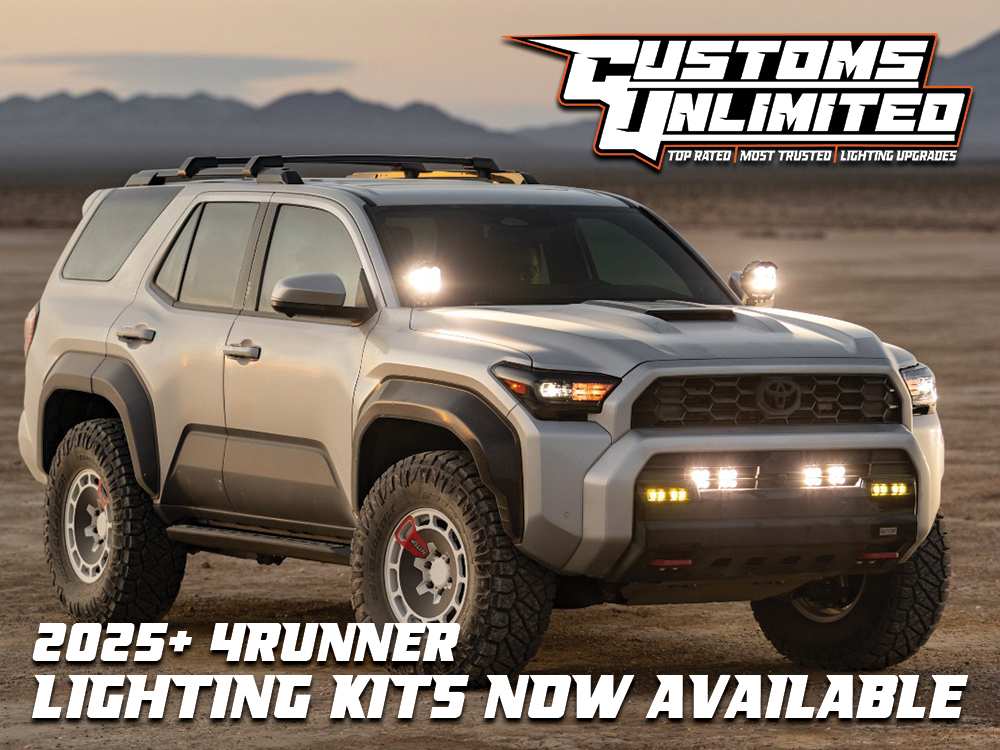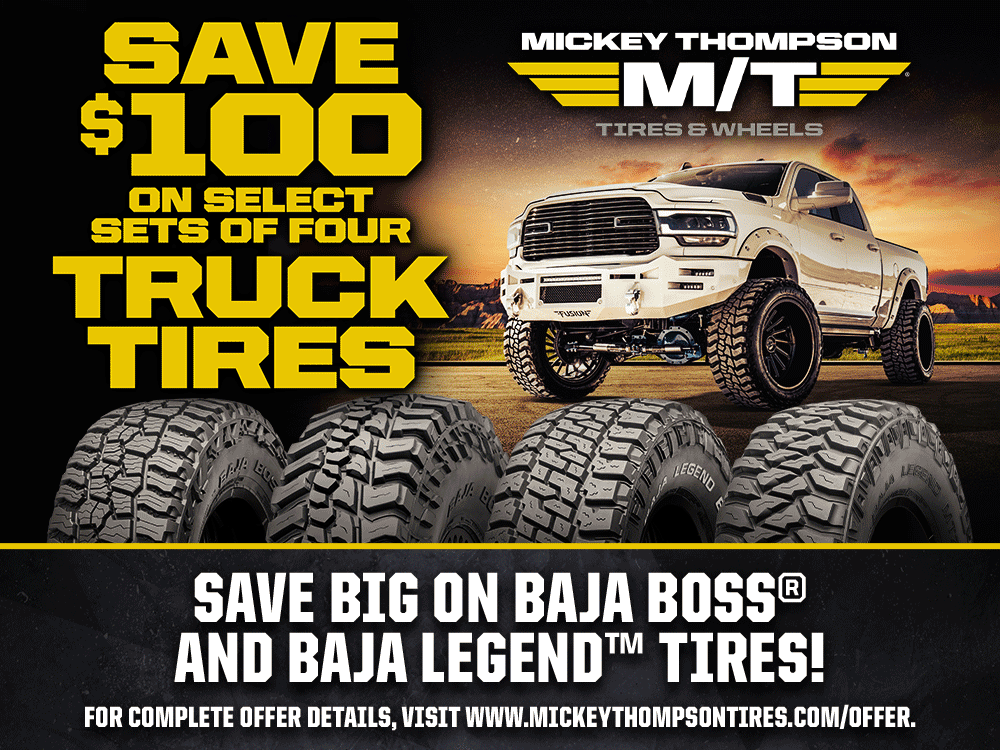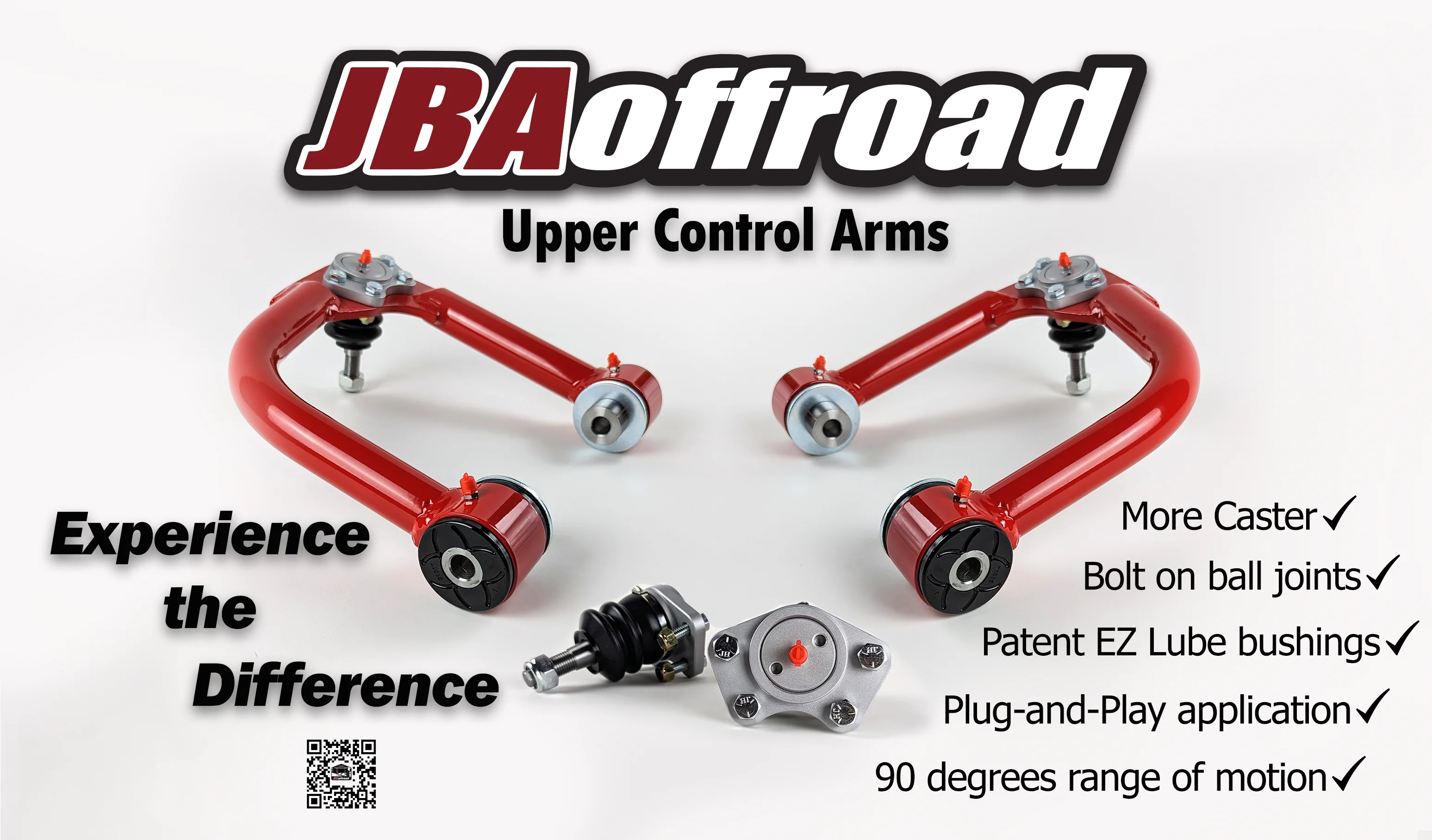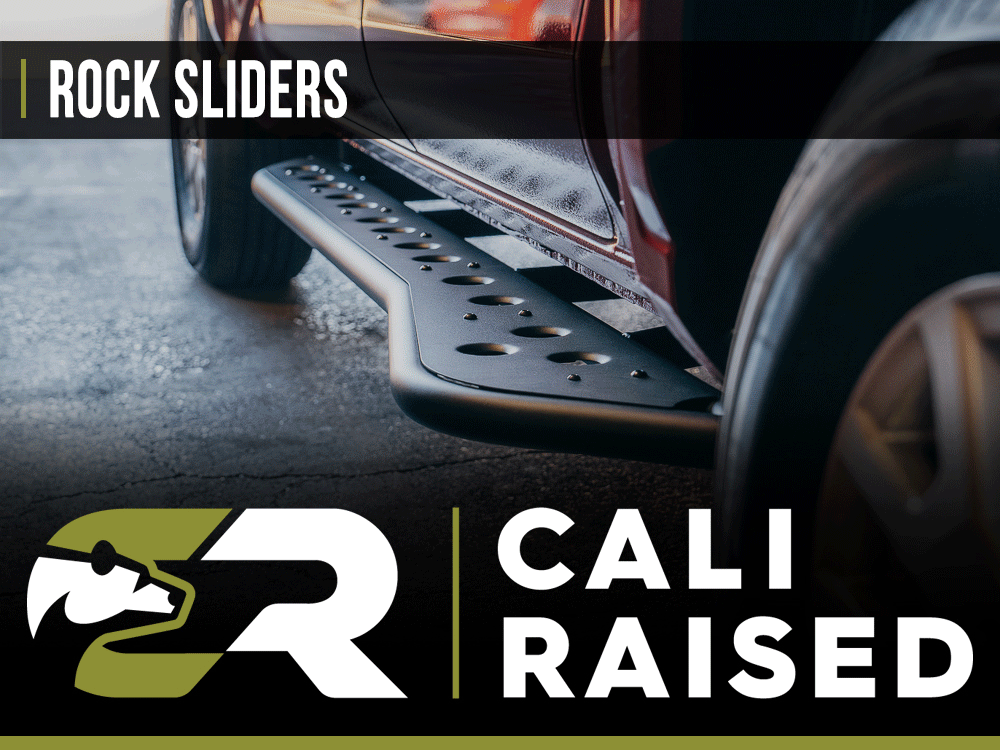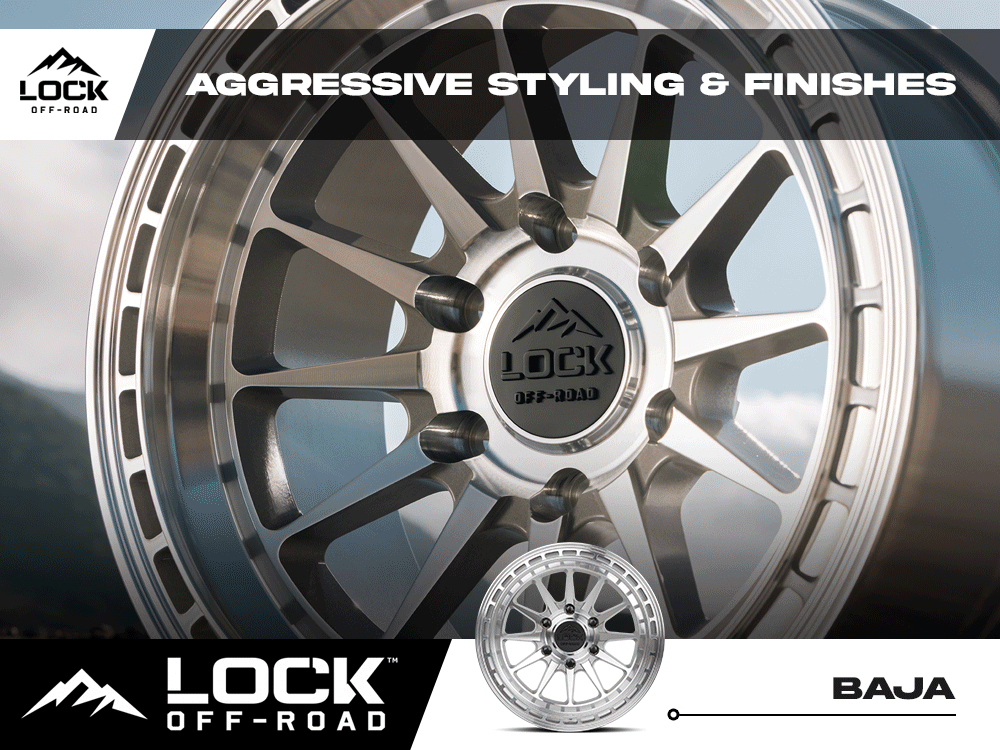- Joined
- Mar 26, 2024
- Messages
- 788
- Reaction score
- 531
- Location
- Sacramento, CA
- Website
- trail4runner.com
74Weld Portal Axles (Gen2) Review on 6th Gen 4Runner - Tested on Rubicon With Factory Suspension
It's official, we completed the Rubicon with the 6th Gen 4Runner, thanks to the 74Weld Gen 2 portal axles. 74W said it's possible to just bolt on a portal and go... so we tested that theory. The only suspension modifications we made were rear Dobinson's adjustable links to clear 37" tires, and Perry Parts rear bump stops. We left the front IFS 100% factory; OEM upper/lower control arms, OEM tie rods, OEM CVs, and OEM steering rack. It turns out you can, in fact, just bolt on a portal axle and wheel the Rubicon. Does it work? Yes. Do I recommend this setup for everyone? No. I'll explain more about this at the bottom.
For now, let's take a look at the new 74W Gen2 portal axles and see what they've changed.
Find 74W online
- 4RunnerMods.com: Check Price
- 74Weld.com: Check Price
74Weld Portal Axles - Overview
If you're unfamiliar with 74Weld, they make a portal axle that provides a 22% (1.22) gear reduction, 3.88" ground clearance lift, full-float rear axle conversion, and room for larger tire clearance, all while keeping your factory ABS system and stock suspension components intact. It's one of the best bolt-on modifications you can do to your suspension if you're looking for true ground clearance. 74Weld released a Gen1 portal axle a few years ago, and it changed the game for how we look at IFS rock crawling. Read more on portal axles here.
I ran that Gen1 portal for the last couple of years, and it was amazing. It allowed me to start hitting harder trails with the confidence that I wouldn't get hung up on rocks around every corner. Going from mid travel on 35" tires to mid travel + portals on 37" tires makes a world of difference when it comes to rock crawling late model IFS rigs.
The Gen1 portals were a great starting point for 74Weld, but they had room for improvement.
The new Gen2 portals come with several upgrades over the first generation. The goal was to improve strength, durability, sealing, and long-term service life, especially under high load and off-road abuse.
Gen2 Portal Upgrades/Changes:
- Reinforced lower control arm pivot points
- Reinforced upper control arm pivot points
- Reinforced tie rod pivot points
- Tie-rod flip for more wheel clearance
- All new one-ton unit bearings use M14 studs instead of the old M12 Toyota studs
- New CV seals are designed to keep out dust and debris while preventing internal seepage
- Redesigned caliper brackets with upgraded hardware to eliminate caliper bracket failures
- Revised breather port placement for improved ventilation
- Larger axle studs for added strength and torque capacity
Loon Lake -> Tahoma
We started at Loon Lake and wheeled into Buck Island, camped for the night, and then camped again at Rubicon Springs the following night. A few of the guys we were out with have never been to the Rubicon, so we took our time and showed them around. Although we completed the trail in three days, we could have easily completed the trail in 1-2 days. This is my 6th time wheeling the Rubicon, so I have plenty of experience with navigating the trail.
I also have a 5th Gen 4Runner on portals, and that IFS setup has been somewhat upgraded; Dirt King 2.5" coilovers, Dirt King factory length UCAs/LCAs, and APEX tie rods. That said, I have something to really compare portals on a factory suspension against.
The portals on factory suspension did surprisingly well; however, the ground clearance is much lower on the 6th Gen vs. my 5th Gen.
- 5G Ground Clearance at skid: 18.5"
- 5G Ground Clearance at diff: 17"
- 6G Ground Clearance at skid: 15.5"
- 6G Ground Clearance at diff: 14.5"
The width of the 6th Gen is wider than the 5th Gen, but nothing that prevented me from sliding through all the tight pinch rocks on the Rubicon.
The only spot where I really noticed the factory suspension working against me was at the end of the trail, where the last 3-5 miles are just small rocks and whoops. While everyone else on 2.5" and 3.0" coilovers were going fast through that stuff, my factory shocks just couldn't handle it. It was pretty rough.
Other than that, the portals and the 6th Gen did great on the Rubicon.
74Weld on Factory Suspension?
Even though 74 Weld portals on factory suspension made it through the Rubicon, it might not be the best answer for you, depending on how you wheel. If you plan on installing portals to go hit basic overland trails (3/10 difficulty) a couple of times a year, then this setup might work for you. If your primary routine is driving around town and hitting the occasional mid-level overland trail, then factory IFS might be all you need at the end of the day. If, however, your goal is to hit the more advanced trails often (7/10 difficulty), then I would highly recommend installing aftermarket shocks for increased travel/comfort, UCAs/LCAs for alignment correction, increased strength at the bushings and joints, and better articulation performance. Portal axles are considered unsprung weight, which does put stress on bushings, joints, and other suspension components. The more strength you add to your suspension, the better it will perform in the long run.
The whole point of us running 74W portals on factory shocks on the Rubicon was to see if you can, in fact, just bolt on a portal axle and go wheel a somewhat difficult trail. It was a success; however, we will be adding shocks, arms, CVs, and tie-rods to our front IFS setup soon for more strength, travel, and comfort.
Last edited:



